Asian pear: taste, varieties & care
The exotic Asian pear can be grown in our UK climate too. Here you will find out how to grow Asian pear trees and our top tips on care.
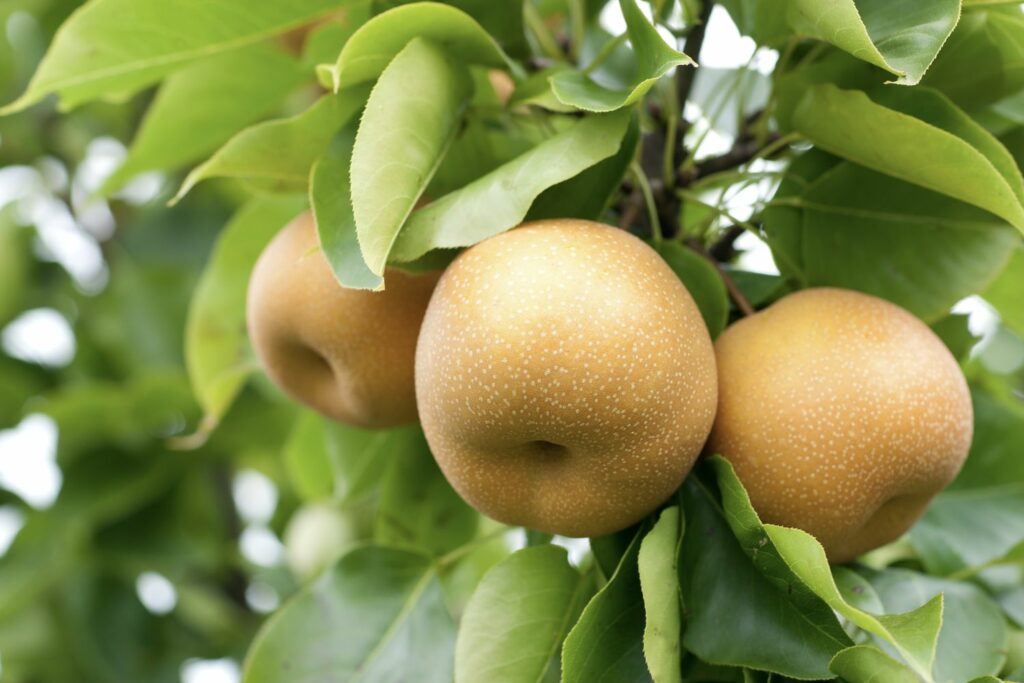
The Asian pear, also known as the nashi pear, Chinese pear, Korean pear, and Japanese pear, is a close relative of our European pear (Pyrus communis) and also thrives in our gardens. We will introduce you to the Asian pear tree and give tips on growing and harvesting.
Contents
Asian pear: origin and properties
Where does the Asian pear come from? The Asian pear (Pyrus pyrifolia) belongs to the rose family (Rosaceae) and originally comes from China yet is now widespread throughout East Asia. The word “nashi” is Japanese for “pear”, so its synonym “nashi pear” is actually repeating itself, much like “chai tea”. The nashi pear tree is a hardy, medium-growing tree that can reach a height of 7 to 15 m when cultivated as a standard. Varieties for home gardens or commercial cultivation are much weaker-growing and usually only reach a maximum height of 5 m and a width of 2 to 4 m. Asian pear blossoming begins in April, with the abundant white flowers providing food for lots of beneficial insects. Asian pears need a second tree for good pollination, either the same variety or a pollinating variety such as ‘Conference’ or ‘Williams Christ’. The apple-shaped fruit has bright spots and can be russetted all over. The diameter of each fruit is between 6 and 10 cm. The colour varies between yellow-green and sun-yellow to bronze in the russet varieties. nashis ripen in late summer between August and October. They taste fruity-sweet and very juicy like melon with a hint of pear. The harvest time lasts for about a month.
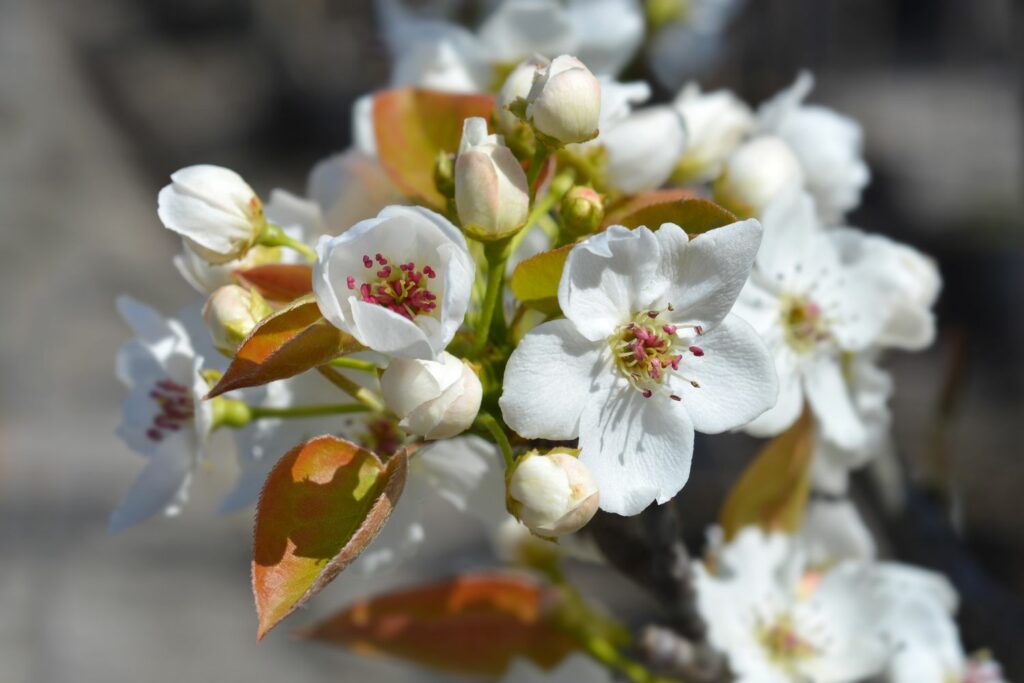
Asian pear varieties: overview
Especially in Asia, the nashi is cultivated in orchards, so most of the available varieties come from East Asian breeding. Here is an overview of ten great Chinese pear varieties for your garden.
- ‘Benita’: A cross between the European pear and Asian pear. The tree grows strongly and can reach a height of 4m. Benita ripens from August and tastes more like a pear than pure nashi varieties. The fully ripe fruit tends to drop from the tree, so make sure to harvest before this happens.
- ‘Chojuro’: A medium to strong-growing Asian pear with large, beautifully dark bronze-coloured russet fruit. The coarse-grained flesh is aromatic and juicy sweet. This is a mid-early ripening variety and can be harvested from September.
- ‘Hakko’: An Asian pear with weak growth and yellow-green to golden-yellow, medium-sized fruit. Harvesting of this sweet-aromatic Asian pear starts from the end of August.
- ‘Hosui’: A medium-growing variety with medium-sized fruit that has an attractive bronze hue. The juicy flesh is aromatic and fine-grained. This nashi can be harvested from September.
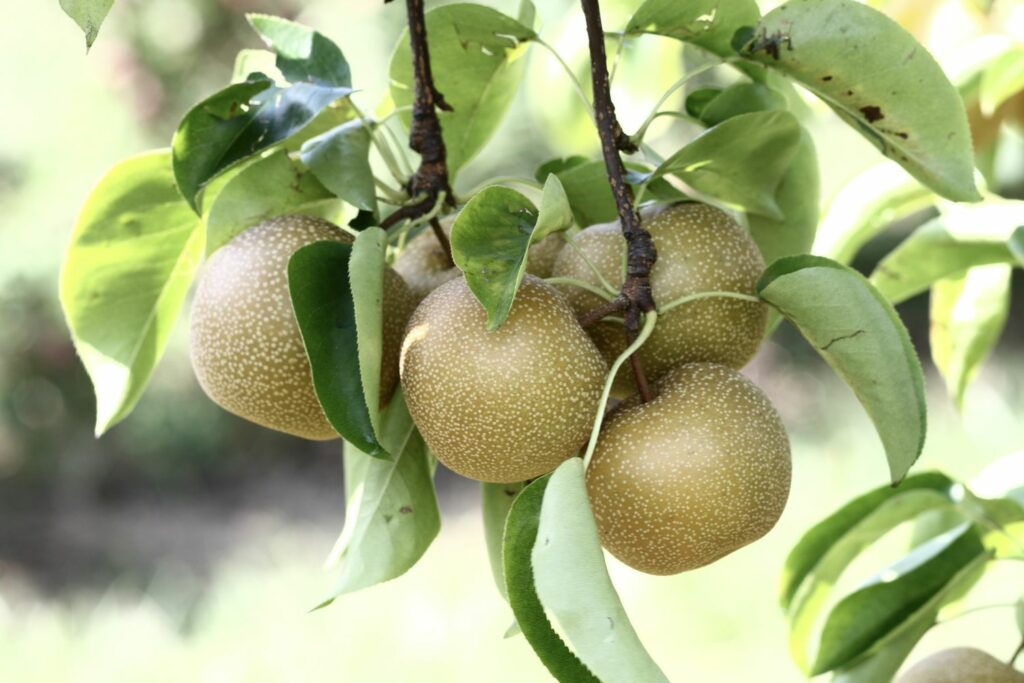
- ‘Kumoi’: A nashi pear with light bronze fruit and medium-strong growth. The pears of this 4 to 5 m tall tree are ripe for picking between September and October.
- ‘Naddel Pear’: A French variety with 3 to 4 m growth height and light yellow, juicy-sweet fruit ripening from September.
- ‘Nijisseiki’: An Asian pear with strong growth and yellow-green, medium-sized fruit. The aromatic pears can be harvested from September onwards.
- ‘Reddy Robin’: A New Zealand variety from a cross between a Chinese nashi and a Japanese nashi with fruit that is speckled red on the sunny side. Reddy robin is scab-resistant and can be harvested from the end of August.
- ‘Shinseiki’: A medium to strong-growing tree and mid-early harvest time starting in September. The yellow fruit is the result of crossing the varieties Nijisseiki and Chojuro.
- ‘Yakumo’: A low-growing tree for small gardens. The yellow-green fruit is significantly smaller than those of other nashi varieties but have a very good fruit quality and a bold flavour. Yakumo ripens after Nijisseiki – from about mid-September.
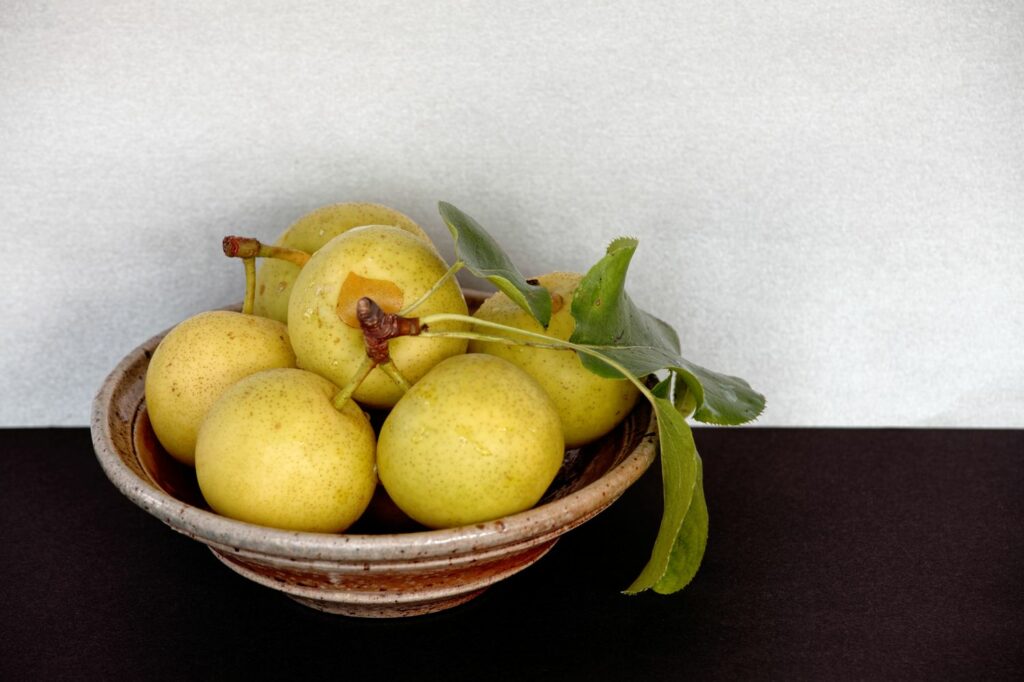
Asian pear tree planting
Fruit trees like the Asian pear tree are best planted in late autumn. Plant between October and November, as the tree forms new roots over the winter and does not lose water through the leaves. By the following spring, a fine root system will have formed, which supplies the nashi pear tree with water and nutrients. With a growth width of 2 to 4 m, keep the Asian pear at least 2 to 2.5 m away from other plants. However, there are also nashi pears cultivated as columnar fruit trees that have a much narrower growth and smaller space requirements.
The right location for the Asian pear tree
Asian pears have similar demands when it comes to their location as European pears. The Asian pear thrives in well-drained, deep, and humus-rich soil in a sunny position. The soil pH value should be slightly acidic.
Asian pear planting: how to do it
You will need to plant the deep-rooted nashi pear tree carefully and tie it down. Follow these steps:
- Dig a large planting hole, at least 1.5 times the size of the root ball of the nashi.
- Mix the dug soil with mature compost if necessary.
- Place the nashi pear tree in the planting hole, with the grafting point about 10 cm above the soil surface.
- Fill with the soil mixture and press the soil down all around.
- Form a water reservoir with a circular mound of soil around the tree and water well.
- Insert two stakes into the ground on either side of the tree, one against and one with the wind direction, and tie the plant to them.
- Final pruning for a good crown structure: reduce side shoots to three to four branches and shorten by half. Shorten the leading shoot so that it is no more than 10 cm higher than the side branches.
Asian pear: care tips
In the first year after planting, water the Asian pear tree during dry periods. Apply an annual fertiliser in spring to provide the fruit tree with essential nutrients. Nashis also need good training and rejuvenation pruning, as they often deteriorate with age more quickly than European pears. When pruning Asian pears, follow the pear tree pruning method. Bring branches growing straight upwards into a horizontal position with weights or ropes. This promotes flowering and a rounded crown. Nashis are more resistant to pests than many fruit trees. They are usually not susceptible to pear rust (Gymnosporangium sabinae) and scab (Venturia inaequalis). However, fire blight (Erwinia amylovora) and pear decline (Candidatus Phytoplasma pyri) does sometimes occur, which can cause entire trees to die. Wasps and birds also like nashi pears and can eat a lot of the tasty fruit.
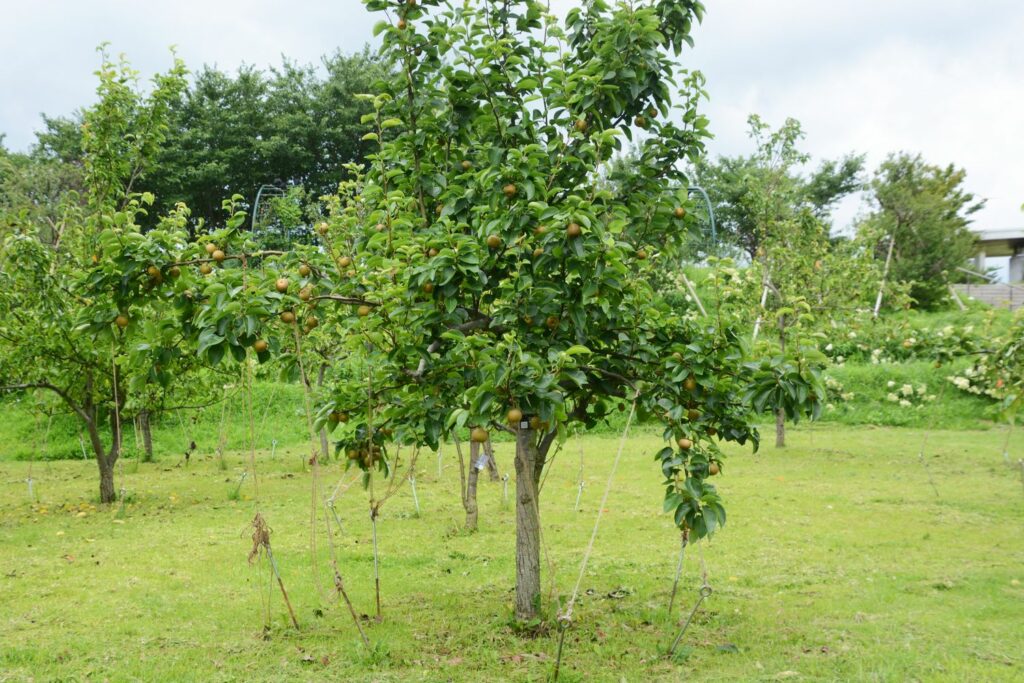
How to propagate Asian pears
Asian pears can be propagated from seed or grafting with scions (cuttings). When planting the nashi pear seeds, note that they are cold germinators, which require a long cold period before germination. Seedlings, however, take several years before they bear any fruit. Certain varieties cannot be propagated by seed, as nashis usually cross with other pears. They should be grafted onto other Asian pear rootstocks. Quince (Cydonia oblonga) and pear are also suitable rootstocks to graft the nashi pear onto. This technique also allows garden owners to graft an existing tree and thus re-graft a branch or part of the crown into a nashi. Read our article on grafting apple trees to learn more about different techniques that can also be applied to pears and nashis.
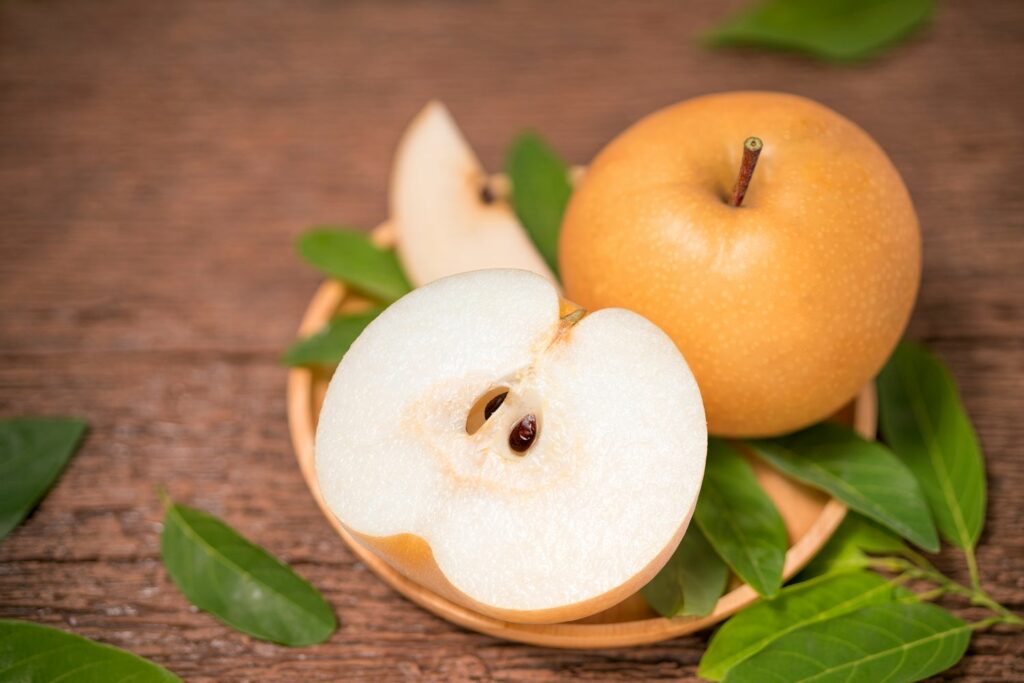
When to harvest Asian pears and storing
Asian pears ripen from August to October. Keep a close eye on the fruit, checking regularly as they turn from hard to soft very quickly. The nashi pear tastes juicy-sweet with an aromatic pear flavour. To eat them fresh, harvest the pears shortly before they are fully ripe, so that they are still crunchy but not hard. Eat ripe pears in a short space of time. They can be processed and preserved in juice, jam, or as pear crisps. You can store hard fruit harvested shortly before being fully ripe in the fridge or a cool cellar for about two months.
How healthy is the nashi pear? The nashi pear has a similar make up to our European pear, but is richer in vitamins, including vitamin C, various B vitamins, and provitamin A. It also contains the minerals potassium and magnesium, which are essential for maintaining healthy muscle function.
Like many of our fruit varieties, such as apple and pear, their relative medlar (Mespilus germanica) also originates from Asia. Read our article on medlar to learn everything there is to know about choosing a variety and growing and harvesting this delicious wild fruit.



















